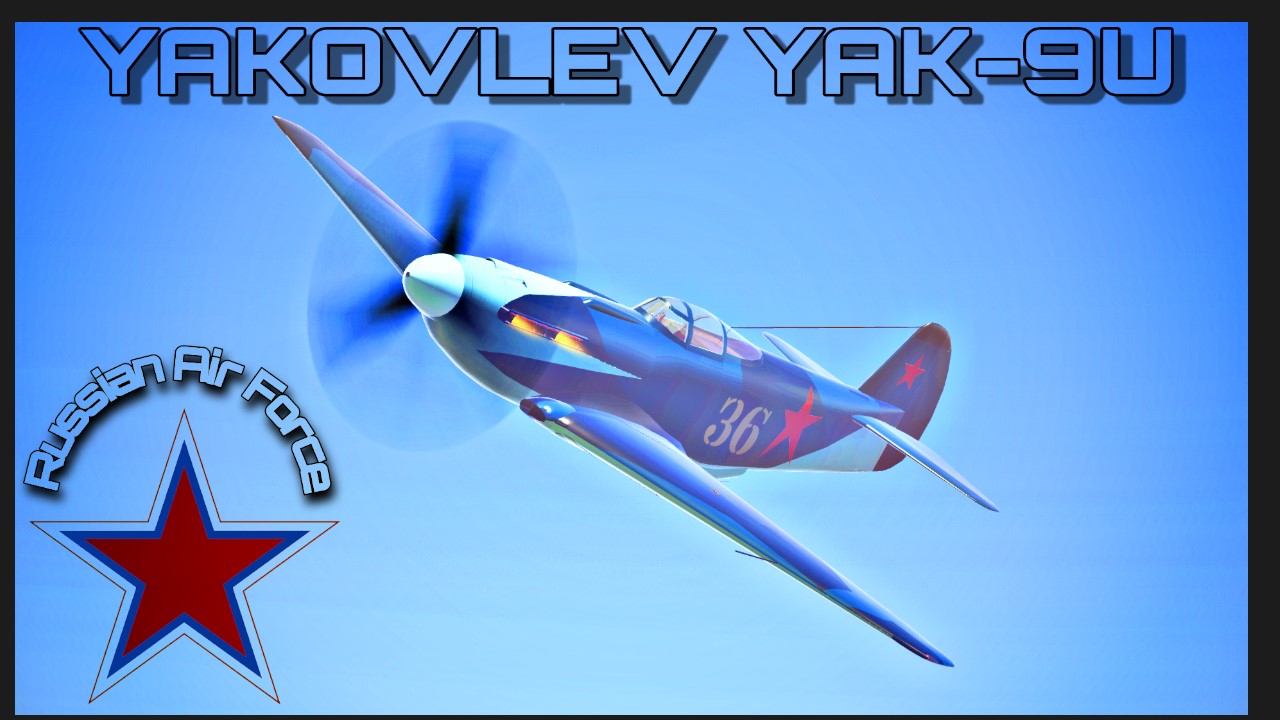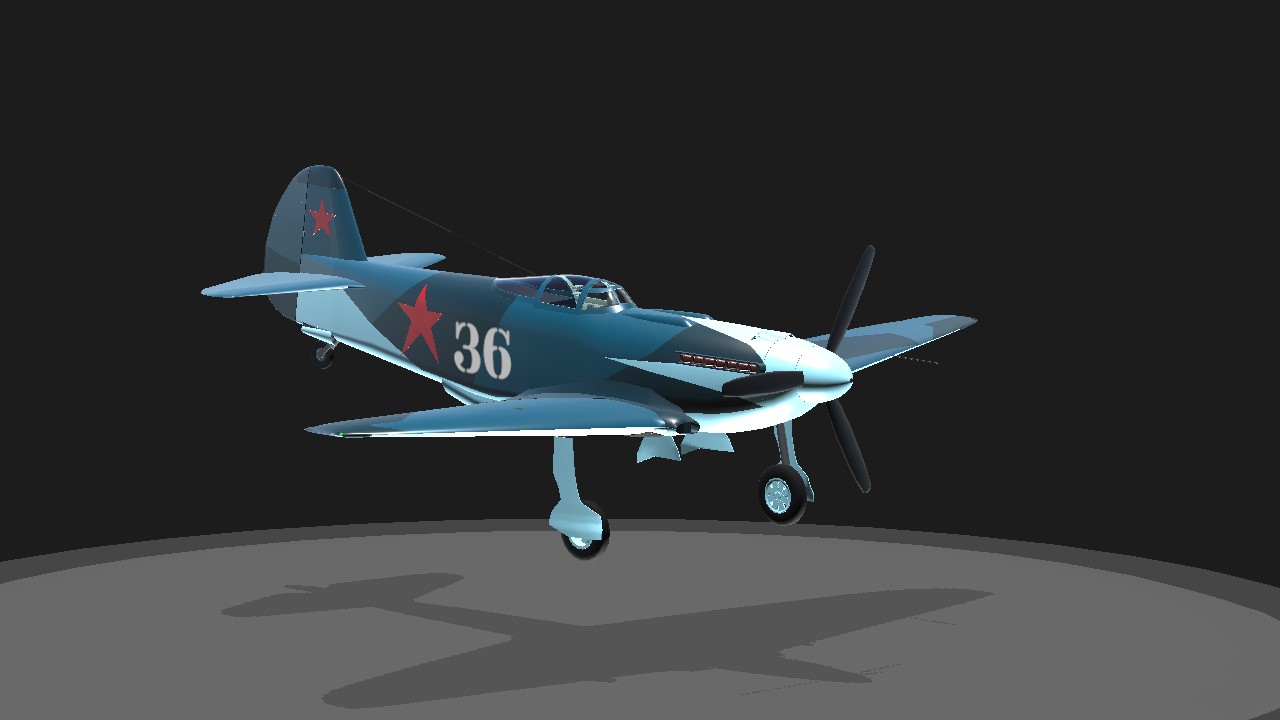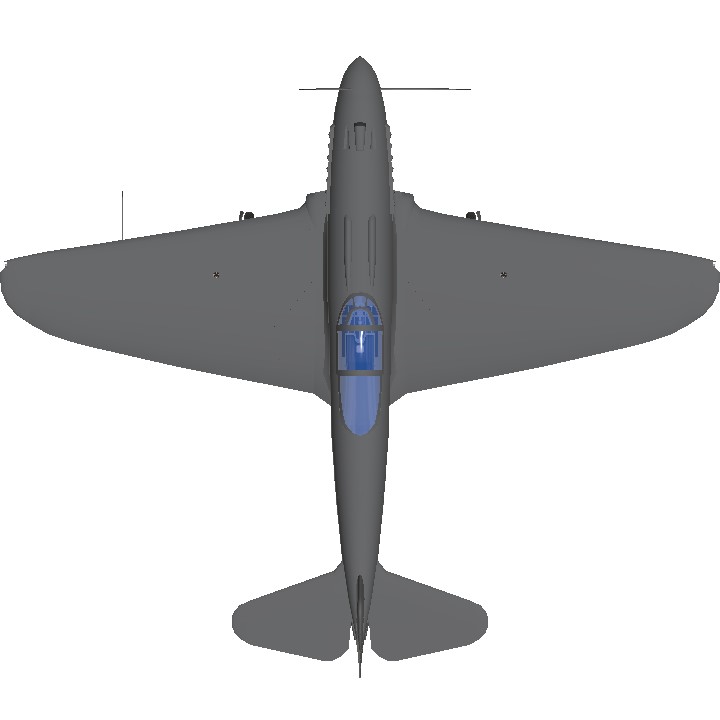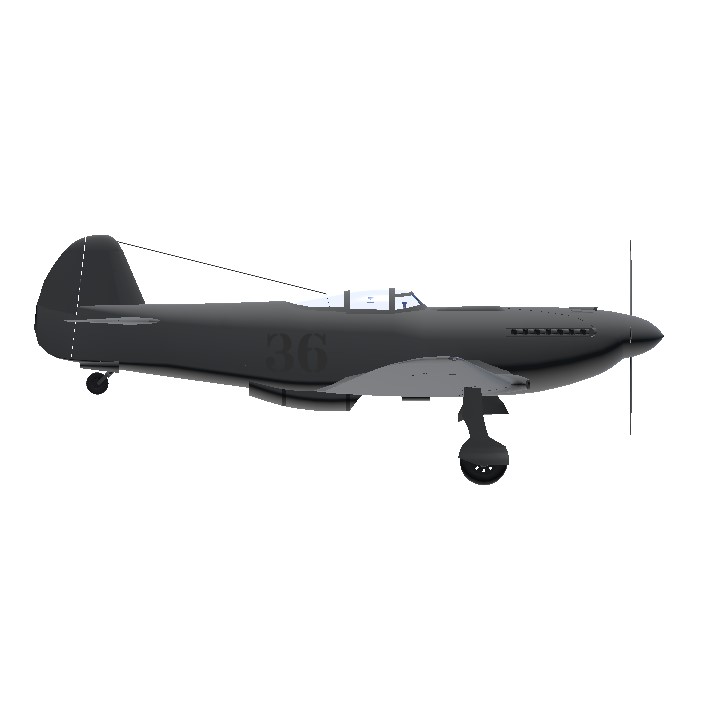CONTROLS:
AG2: lights
AG8: open/close canopy
HISTORY:

During December 1943, the creation of a new airframe (Yak-9U) allowed the installation of the M-107A engine, which was more powerful than the previous VK-105PF.

The engine mount was brand new and included individual faired exhaust pipes, wings, and fuselage structure that was made of metal while the whole aircraft received a covering of Bakelite skin. The horizontal tail surfaces were slightly reduced in order to afford the aircraft improved pitch control.

The oil cooler intake was re-positioned from beneath the nose to the port wing root as well as an enlarged radiator bath being moved further aft under the fuselage. A supercharger intake was centred on the top decking of the engine cowling. The rear antenna cable was moved inside a lengthened rear canopy which featured a more aerodynamically refined shape with a modified fuselage deck contour.

The The typical armament of the Yak-9U was a 20 mm (79 cal) ShVAK cannon with 120 rounds that was fired through the aircraft's hollow propeller shaft, and two 12.7 mm (50 cal) Berezin UB machine guns with 340 rounds.

January to April 1944 marked the commencement of State trials and revealed that the Yak-9U had a superior top-speed compared to all fighters in service on the Eastern front at 6,000 m (19,685 ft). Unlike the I-185 the Yak-9U was a much simpler to fly and stable aircraft.

Ultimately the M-107A engine inherited all the problems of the VK-105PF engine.

The engine was prone to overheating, oil leaks, loss of engine pressure during climbs, spark plugs constantly burning out, and intense vibrations which would fatigue assembly bolts leading to a short engine life.

These defects forced the first production batches starting during April 1944 to be powered by the reliable M-105 PF-3 engine.

Further changes would include the fuel capacity of the Yak-9U being upgraded to 400L (106 US gal) and in order to re-balance the aircraft, the wings where moved 9.906 centimeters (3.9in) forward and the aircraft's VlSh-107LO propeller being replaced with the older VISH-105S. A total production of 1,134 aircraft where constructed by December 1944.
Specifications
Spotlights
- This craft is curated
- MAHADI 1.9 years ago
- Alisuchanka 1.9 years ago
General Characteristics
- Created On Android
- Wingspan 31.5ft (9.6m)
- Length 28.5ft (8.7m)
- Height 11.0ft (3.3m)
- Empty Weight 5,539lbs (2,512kg)
- Loaded Weight 6,318lbs (2,866kg)
Performance
- Power/Weight Ratio 0.106
- Horse Power/Weight Ratio 0.237
- Wing Loading 23.2lbs/ft2 (113.2kg/m2)
- Wing Area 272.5ft2 (25.3m2)
- Drag Points 920
Parts
- Number of Parts 704
- Control Surfaces 2
- Performance Cost 2,542






@Alisuchanka thanks bro
Excellent looking plane! Great job on this! My suggestions would be making the landing gear bays hollow, but that would be kinda difficult but possible. also, the Trim is reversed